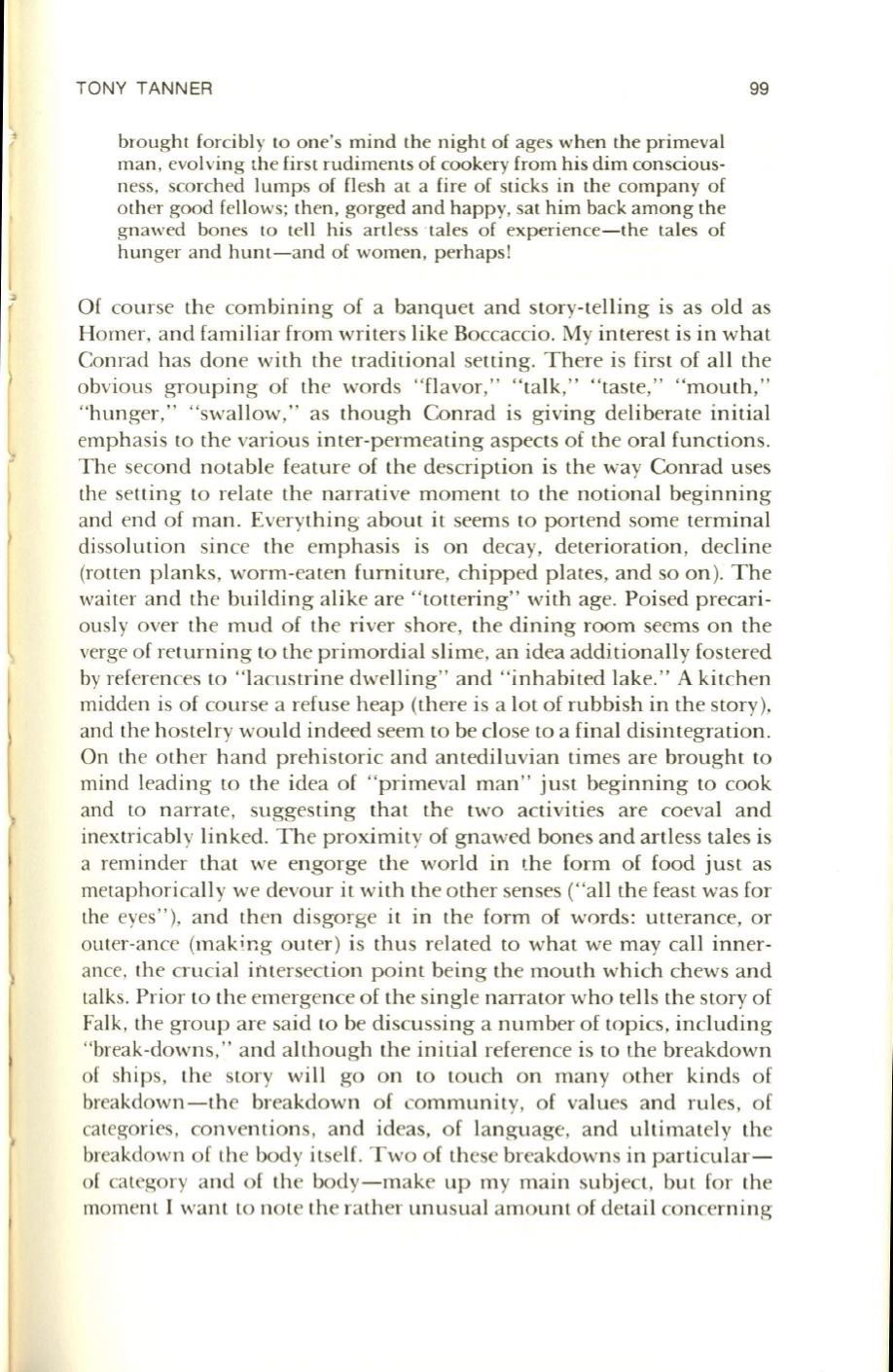
TONY TANNER
brought forcibly
to
one's mind the night of ages when the primeval
man, evolving the first rudiments of cookery from his dim conscious–
ness, scorched lumps of flesh at a fire of sticks in the company of
other good fellows; then, gorged and happy, sat him back among the
gnawed bones
to
tell his artless ·tales of experience-the tales of
hunger and hunt-and of women, perhaps!
99
Of course the combining of a banquet and story-telling is as old as
Homer, and familiar from writers like Boccaccio. My interest is in what
Conrad has done with the traditional setting. There is first of all the
obvious grouping of the words "flavor," "talk," "taste," "mouth,"
"hunger," "swallow," as though Conrad is giving deliberate initial
emphasis
to
the various inter-permeating aspects of the oral functions.
The second notable feature of the description is the way Conrad uses
the setting to relate the narrative moment to the notional beginning
and end of man. Everything about it seems to portend some terminal
dissolution since the emphasis is on decay, deterioration, decline
(rotten planks, worm-eaten furniture, chipped plates, and so on). The
waiter and the building alike are "tottering" with age. Poised precari–
ously over the mud of the river shore, the dining room seems on the
verge of returning to the primordial slime, an idea additionally fostered
by references to "lacustrine dwelling" and "inhabited lake." A kitchen
midden is of course a refuse heap (there is a lot of rubbish in the story),
and the hostelry would indeed seem to be close
to
a final disintegration.
On the other hand prehistoric and antediluvian times are brought to
mind leading to the idea of "primeval man" just beginning to cook
and
to
narrate, suggesting that the two activities are coeval and
inextricably linked. The proximity of gnawed bones and artless tales is
a reminder that we engorge the world in the form of food just as
metaphorically we devour it with the other senses ("all the feast was for
the eyes"), and then disgorge it in the form of words: utterance, or
outer-ance (making outer) is thus related to what we may call inner–
ance, the crucial intersection point being the mouth which chews and
talks. Prior to the emergence of the single narrator who tells the story of
Falk, the group are said
to
be discussing a number of topics, including
"break-downs," and although the in itial reference is to the breakdown
of ships, the story will go on to touch on many other kinds of
breakdown-the breakdown of community, of values and rules, of
categories, conventions, and ideas, of language, and ultimately the
breakdown of the body itself. Two of these breakdowns in particular–
of category and of the body-make up my main subject, but for the
moment I want to note t.he rather unusual amount of detail concerning


